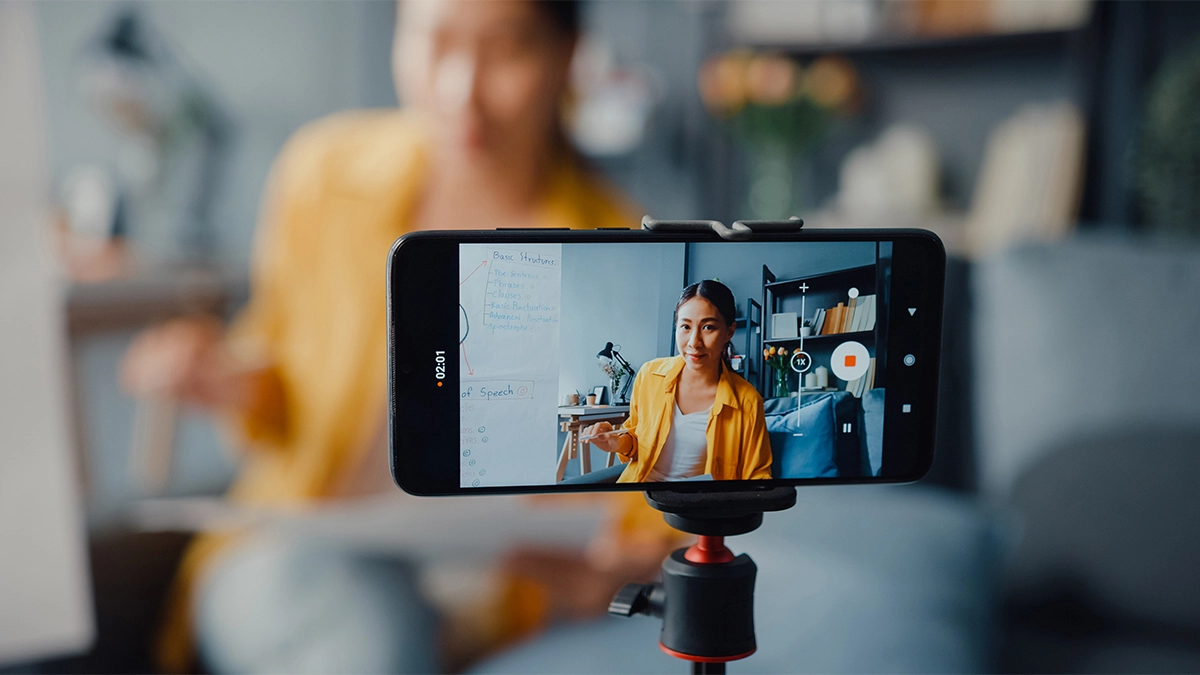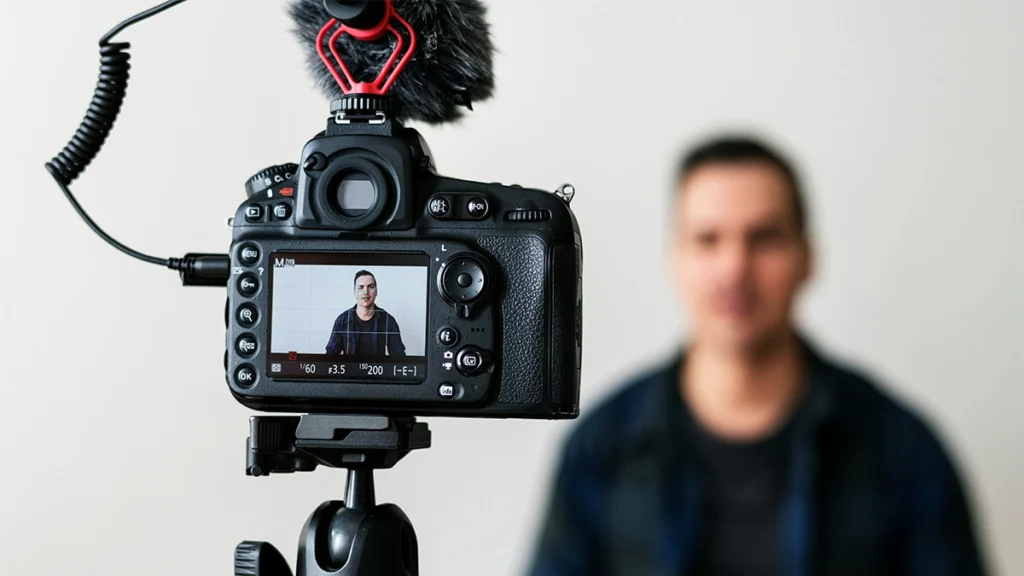Not sure how to get started with video content?
Well, starting video marketing as a small business doesn’t need a production studio or a big budget—it just takes a smart approach, a little patience, and the willingness to be seen.
Here’s a step-by-step breakdown of what it takes:
- Shift Your Mindset First
- Set Clear Goals
- Plan Your Content
- Gather the Right Tools (On a Budget)
- Choose the Right Platforms
- Post with Purpose
- Track What Works
- Stay Consistent
1. Shift Your Mindset First
The biggest hurdle you’ll face is confidence.
Being comfortable in front of a camera isn’t something that will come naturally to most people. Deep down we are all worried about messing up, or what people are going to think of us. But remember, people aren’t always expecting perfection – they are looking for authenticity.
The best way to do it is speak like you’re chatting to a customer, not presenting on live TV.
So the key question, how do you get confident in front of a camera?
A technique that worked for us was practice, practice, practice. Set your camera up to record and just start talking. You don’t have to talk about your business, or anything that you are ultimately going to want to film. But rather, start talking about something your are passionate or know a lot about.
The goal here is just to get comfortable talking to the camera.
The key to this technique is to keep in your mind that no one except you are going to see the outcome of this practice. Do this for as long as you can, until you start to feel yourself relaxing and your confidence growing.
Top Tip: Start with voice-over videos or screen recordings if you’re not ready to show your face.
2. Set Clear Goals
Why are you creating video content in the first place?
Having a clear goal is what is ultimately going to be the thing that motivates you to step out of your comfort zone and in-front of the camera.
Ask yourself: What do you want this video to do? Who is it for? What action should viewers take?
Your goals could be:
- Boosting brand awareness
- Driving traffic to your website
- Explaining how your service works
- Generating leads via a call to action
3. Plan Your Content
Video content is everywhere, and it comes in may shapes and sizes. Now is the time to decide on the type of content that you want to create.
If you aren’t sure, why not thing about the type of content that you like to watch, and replicate it. The key is to start small and simple.
Here are some types of content to consider.
- FAQs or myth-busting about your product/service
- Behind-the-scenes of your process
- Customer testimonials
- Before/after results
- Mini tutorials or how-tos
You can even base videos on your existing blog content—just break them into visual, bite-sized pieces.
Top Tip: Write a loose script or bullet points so you stay on track. Don’t read word-for-word—speak naturally.
4. Gather the Right Tools (On a Budget)
You don’t need a Hollywood setup. Here’s a minimalist kit to get you going:
Equipment Essentials:
- Camera: Your smartphone is absolutely fine. Just use the rear camera for better quality.
- Tripod: Keeps your shot steady. You can get a basic one for under £20.
- Lighting: Natural daylight from a window works well. If needed, a ring light adds consistency (~£30).
- Microphone: Audio quality matters. A £15–£40 clip-on mic makes a huge difference.
Editing Software:
- CapCut or InShot – Great for mobile editing and adding captions.
- Canva – Ideal for thumbnails, templates, and intros.
- iMovie (Mac) or Clipchamp (Windows) – Free desktop editors.
- DaVinci Resolve – Free and professional-grade (slight learning curve).
Keep it simple: cut out mistakes, add captions, trim the start/end, and you’re good to go.
Want help turning these ideas into real content?
Check out our video editing services for small businesses
5. Choose the Right Platforms
It is important to decide from the outset where your video content is going to live. Filming for YouTube is very different from filming for social media.
There are a wide variety of aspects to consider:
- landscape vs portrait
- short form vs long form
It is important to consider where your audience spends most of it’s time? Then choose one or two platforms to start with:
| Platform | Best For |
|---|---|
| Reels Short, visual content + behind-the-scenes | |
| YouTube | Long-form content, tutorials, and reviews |
| B2B videos, founder stories, business tips | |
| TikTok | Creative, trend-based content |
| Website/Blog | SEO-driven videos like explainers |
| Testimonials or product highlight reels |
Cross-post your content where possible to maximise reach.
6. Post with Purpose
When uploading a video:
- Use a catchy title with relevant keywords (e.g. “How to Create Easy Social Media Videos as a Small Business”).
- Write a brief, engaging caption or description.
- Add relevant hashtags on platforms like Instagram or TikTok.
- Include a clear call-to-action: “Visit our website,” “Drop us a message,” or “Follow for more tips.”
7. Track What Works
You’ve done all the hard work, now is the time to keep an eye on what your audience thinks, and make adjustments. At the end of the day you may love the video content that you are creating, but if your audience doesn’t, then you aren’t going to achieve your goals.
Use insights and analytics to guide your content. Look at:
- Views
- Watch time
- Engagement (likes, shares, comments)
- Click-throughs (on links)
Then do more of what works. For instance, if your “How I Started My Business” video had strong engagement, consider making a part two or a behind-the-scenes sequel.
8. Stay Consistent
You don’t need to post daily. Consistency beats frequency.
Try this:
- Batch-record 2–4 videos once a month.
- Schedule them using tools like Buffer or Meta Business Suite.
- Repurpose a longer video into smaller clips.
Remember: Done is better than perfect.
Final Thoughts
Starting video content as a small business can feel like a big leap—but it’s one of the most rewarding marketing moves you can make. From engaging your audience and boosting SEO to increasing trust and conversions, the benefits far outweigh the initial nerves or learning curve.
So, take that first step. Start simple. Be real. Keep going. And watch as your small business makes a big impression.


